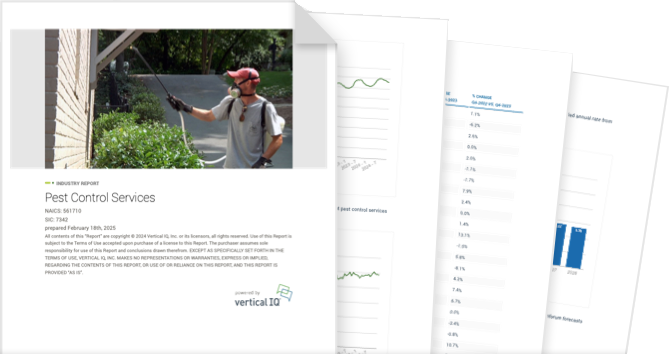Breweries NAICS 312120

Unlock access to the full platform with more than 900 industry reports and local economic insights.
Get access to this Industry Profile including 18+ chapters and more than 50 pages of industry research.
Industry Summary
The 4,922 production breweries in the US include about 155 national or international breweries producing over 6 million barrels per year. Around 260 are regional craft breweries producing between 15,000 and 6 million barrels annually. More than 2,000 microbreweries produce less than 15,000 barrels per year. An additional 3,400 brewpub restaurants and 3,800 taprooms also produce beer on-site.
Competition Among Breweries
The beer industry is highly competitive, with a proliferation of craft and large/non-craft breweries fueling competition.
Industry Highly Regulated
The beer industry is highly regulated at both the state and federal levels.
Recent Developments
Dec 13, 2025 - Beer Cheese
- As curated food-and-drink experiences rise in popularity, pairing beer with cheese presents a promising partnership opportunity for craft brewers, according to a recent article in CraftBeer.com. Pairing a certified organic brewery with an organic dairy, for a decade Oregon’s Rogue Creamery has produced a Chocolate Stout Cheddar with Portland’s Hopworks Brewery. Brewers can work with local dairy producers to create themed taproom nights or beer-and-cheese flights that highlight complementary flavor profiles, expanding appeal to both beer lovers and foodies. For example, a brewery might team up with a regional artisan cheesemaker for a seasonal “hops and curds” event, pairing IPAs with sharp cheddars or stouts with aged goudas, encouraging cross-promotion on social media and shared marketing. Collaborations help small producers tap into each other’s loyal followings, reinforce local food culture, and drive mutual business benefits for breweries and cheesemakers.
- The collapse of 37-year-old craft brewing pioneer Rogue Ales & Spirits, which filed for Chapter 7 bankruptcy in November, offers stark warnings for other breweries about the risks of complacency and mismanagement in a crowded market, VinePair reports. The Oregon brewery’s downfall stemmed from a protracted decline in relevance and sales, large fixed costs, and an inability to adapt its branding and product portfolio as newer competitors gained traction, according to VinePair. Once a trailblazer in bold beers and early craft innovations, Rogue failed to modernize its offerings or marketing in line with evolving consumer tastes, leading to dated inventory and weakened demand. Rogue’s demise underscores the importance of staying agile, controlling operational costs, maintaining a strong connection with today’s drinkers, and continually refreshing brand identity. Its liquidation offers a lesson for brewers of any size: past prestige doesn’t guarantee future success in an increasingly competitive and fast-shifting craft beer landscape.
- Declining beer consumption, especially among younger adults, is reducing demand for hops, one of four essential ingredients in beer, Idaho Business Review reports. Idaho is among the top three hops producing US states, despite declining acreage. As demand for beer falls, brewers are prioritizing quality over quantity to stay profitable, reducing demand for the crop. That has Idaho hops farmers looking to diversify with new crops and livestock for better cash flow. Dianne Gooding, a sixth-generation hops farmer and the vice chair of the Idaho Hops Growers Commission says both production and acreage devoted statewide to growing hops are slowly on the decline, adding that’s leading to shrinkage throughout the entire supply chain within the entire hop industry. Gooding noted that acreage devoted to hops in Yakima, Washington, which ranks first in hops production in the nation, is also declining, falling from 40,000 acres to just under 32,000.
- The Producer Price Index (PPI) for breweries, which measures prices before reaching consumers, rose 1.4% in September compared to a year ago, after rising 1.3% in the previous September-versus-September annual comparison, according to the latest US Bureau of Labor Statistics data. At the retail level, the Consumer Price Index (CPI) for beer-at-home increased 1% year over year in September and beer away-from-home rose 3.6% over the same period. That’s compared to all alcoholic beverages, which rose 2% on an annual basis, BLS data show. Meanwhile, employment by breweries grew 0.5% YoY in August, per BLS.
Industry Revenue
Breweries

Industry Structure
Industry size & Structure
The average brewery employs 19 workers and generates over $6 million in annual sales.
- There are approximately 8,135 production breweries in the US, according to the Treasury Department. About two-thirds (5,347 breweries) produce 1,000 barrels or fewer annually, while only 26 breweries produce over 1 million barrels per year. In 2024, US breweries produced nearly 175 million barrels of beer.
- The typical global brewery brews 100 million barrels annually, with revenue per barrel of approximately $125 (a barrel is 31 gallons).
- The top three global breweries – Belgium-based AB InBev, Netherlands-based Heineken, and China Resources Snow Breweries – commanded about half of the global beer market in 2024. Imported beer comprises nearly 18% of all beer consumed in the US.
- Regional craft breweries include Boston Beer Company, Sierra Nevada, and New Belgium. These breweries typically distribute nationally and often internationally. The 280-or-so regional breweries produce around 15.6 million barrels of beer annually.
- Regional craft breweries produced about 67% of craft beer volume in 2024, while microbreweries and taprooms produced 16.4% and 8.3%, respectively, according to the Brewers Association.
- About 3,550 US brewpubs produce 1.5 million barrels of beer each year.
- Per capita, Americans consume about 28 gallons of beer annually. North Dakota, New Hampshire and Montana lead the nation in beer consumption with more than 40 gallons per capita. New York, New Jersey, Connecticut and Utah consume the least with about half that amount per capita.
Industry Forecast
Industry Forecast
Breweries Industry Growth

Vertical IQ Industry Report
For anyone actively digging deeper into a specific industry.
50+ pages of timely industry insights
18+ chapters
PDF delivered to your inbox
